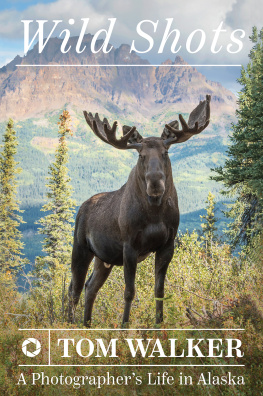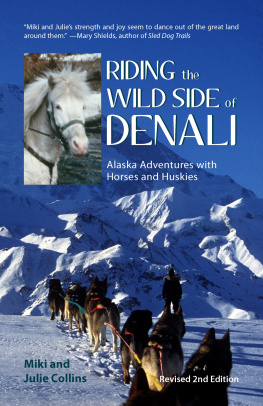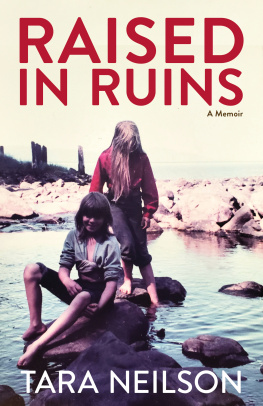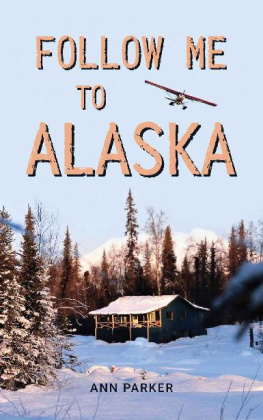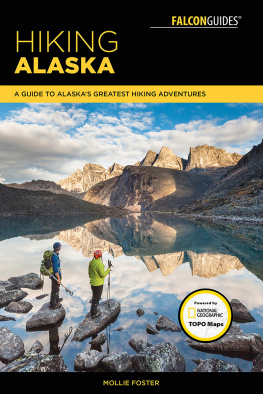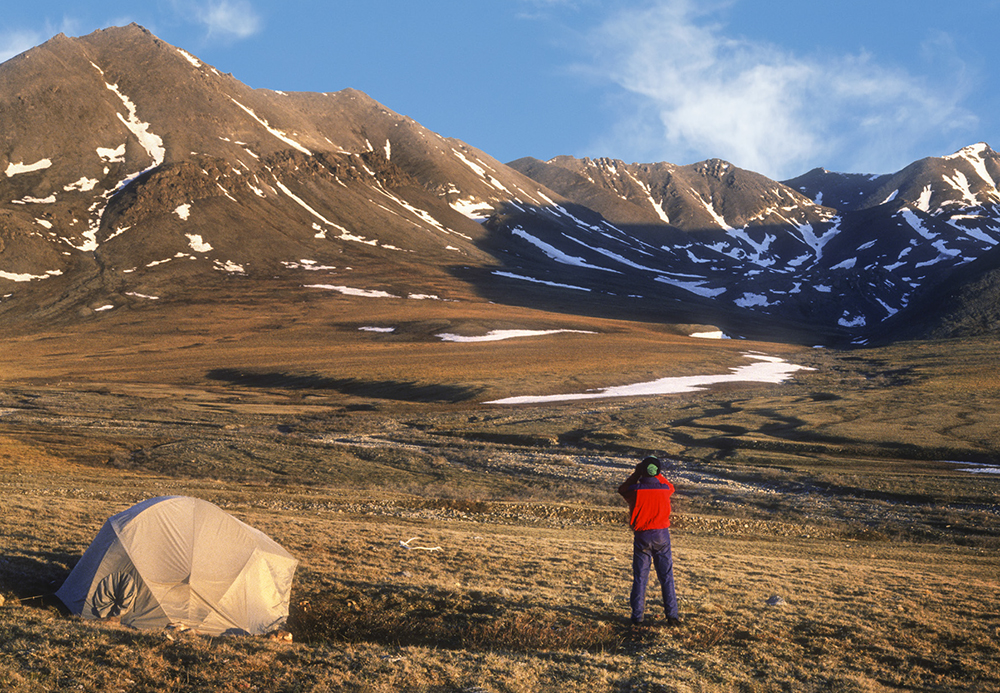Wild Shots
Wild Shots
A Photographers
Life in Alaska
TOM WALKER
MOUNTAINEERS BOOKS is dedicated to the exploration, preservation, and enjoyment of outdoor and wilderness areas.
1001 SW Klickitat Way, Suite 201, Seattle, WA 98134
800-553-4453, www.mountaineersbooks.org
Copyright 2019 by Tom Walker
All rights reserved. No part of this book may be reproduced or utilized in any form, or by any electronic, mechanical, or other means, without the prior written permission of the publisher.
Mountaineers Books and its colophon are registered trademarks of The Mountaineers organization.
Printed in China
Distributed in the United Kingdom by Cordee, www.cordee.co.uk
22 21 20 191 2 3 4 5
Copyeditor: Ali Shaw, Indigo Editing
Design and layout: Melissa McFeeters, www.melissamcfeeters.com
All photographs by the author unless credited otherwise
Cover photograph: A bull moose pauses near the authors cabin in the Alaska Range, with Mount Fellows in the background.
Frontispiece: The author searches for wolves in Sunset Pass, Brooks Range, Arctic National Wildlife Refuge.
Portions of the stories in this collection have appeared elsewhere in slightly different form: Cheechako in Alaska magazine; Camping with the Wehrmacht on APRN, KUAC-FM; Ram Country in Alaska magazine; Wolf Howls in Shadows on the Tundra by the author; Apex Predators in Denali Journal by the author; Making Contact in Alaska magazine; On the Edge in Shadows on the Tundra and Caribou: Wanderer of the Tundra, both by the author; Ice Bears in Defenders magazine; Goddess of the Dawn on APRN, KUAC-FM; Wolverine in Alaska magazine. Part of Calving Grounds appeared in Caribou: Wanderer of the Tundra and is reprinted with permission.
Library of Congress Cataloging-in-Publication Data is on file for this title at https://lccn.loc.gov/2019000160.
Mountaineers Books titles may be purchased for corporate, educational, or other promotional sales, and our authors are available for a wide range of events. For information on special discounts or booking an author, contact our customer service at 800-553-4453 or .
Printed on FSC-certified materials
ISBN (paperback): 978-1-68051-227-4
ISBN (ebook): 978-1-68051-228-1

We can judge the heart of man by his treatment of animals.
IMMANUEL KANT
Contents
The summits of the central Alaska Range tower over an autumnal wash of color, much like the day I arrived in Alaska.
Awakenings
ONCE, I DREAMED OF A LIFE AT SEA, on a sailboat or an island, wearing little or nothing at all. I had visions of crystal water, endless sunshine, lush ports of call and Polynesian beauties, fantasy nights cooled by tropical breezes. Memories of these teenage dreams always bring to mind one question: How the hell did I end up spending more than fifty years in Alaska?
I grew up in Los Angeles, smothered by smog, assaulted by heat and ceaseless traffic. The one great wilderness known to me as a boy, the sea, stretched west to far horizons, with distant sails hinting at mystery and adventure. Reading The Sea-Wolf, Coming of Age in Samoa, and Mutiny on the Bounty fired my desire to be somewhere with pristine air and water and unspoiled environment. Places where wildlifewhales, porpoises, sea turtles, and albatrossesflourished and a person could forage for food from sea and shore. Places where living meant more than a nine-to-five grind. Seeking cool offshore winds, I explored coastal tide pools and watched pastel sunsets, lured by the sirens song of the distant unknown.
The urban landscape, the tracts of identical houses, the importance placed on glitzy cars and fashion repelled me, a child raised by parents whod passed on their simple Midwestern values. My grandfather was an alcoholic, a mean drunk, who took his son, my father, out of the third grade to work in a coal mine. They migrated to California in the 20s building boom to cash in on the need for labor. My mother was forty when I was born in 1945, my father forty-three, a construction worker, and neither had the inclination to guide me through the shoals of adolescence. We were poor, limited by my fathers education, living on the edge of an affluent suburb that was home to Hollywood stars like John Wayne. Unable to blend in with others my age, who mostly enjoyed material advantages, I sought escape in wandering along the coast and among the chaparral hillsides. Studying the journals of Lewis and Clark, I became convinced I had been born in the wrong century.
Decades-old adventure movies and documentaries revealed worlds beyond my narrow experience. Time and again I watched the grainy, flickering films of cinematographers and explorers Osa and Martin Johnson and their journeys to the wildest places on earth. Another hero was Frank Bring Em Back Alive Buck, who captured wild animals all over the world. In one movie he wrestled a giant boa constrictor, the coils tightening around him while the breathless narrator heralded his doom, only to be rescued at the last minute by a group of his faithful native trackers. I later realized his thrilling, almost melodramatic, films were often staged reenactments, sometimes pitting captive animals against their keepers.
The wildlife films of Walt Disney were my favorite Saturday matinees. On television I watched reruns of Bear Country, Beaver Valley, Living Desert, and other Disney nature narratives. These films turned my attention from the sea. After reading Jack Londons northern classics and Robert Services iconic Klondike poems, I became fixated on Alaska and the Yukon, the far northern wilderness realm of moose, grizzly bears, and wolves. Dreams of a cabin in the woods slowly replaced visions of life at sea.
A wild animal park just north of LA in Thousand Oaks, CaliforniaJungleland USAwas an irresistible attraction for me. Big cats were the main draw, but I gawked at all manner of wildlife, from bats to bears, most housed in cramped and smelly cages, their ceaseless pacing troubling me. The animal show of Mel Koontz, the premier trainer of Hollywoods golden age famous for training the MGM lion, rivaled anything staged by the finest circuses. He put lions and tigers through their paces, jumping them from one high perch to another or through rings of fire, all accompanied by the crack of whips, blanks fired from revolvers, and the roars and snarls of the apex predators pushed into contact with mortal enemies. Koontz greeted the public after his shows, and I saw the vivid scars that laced his arms.

